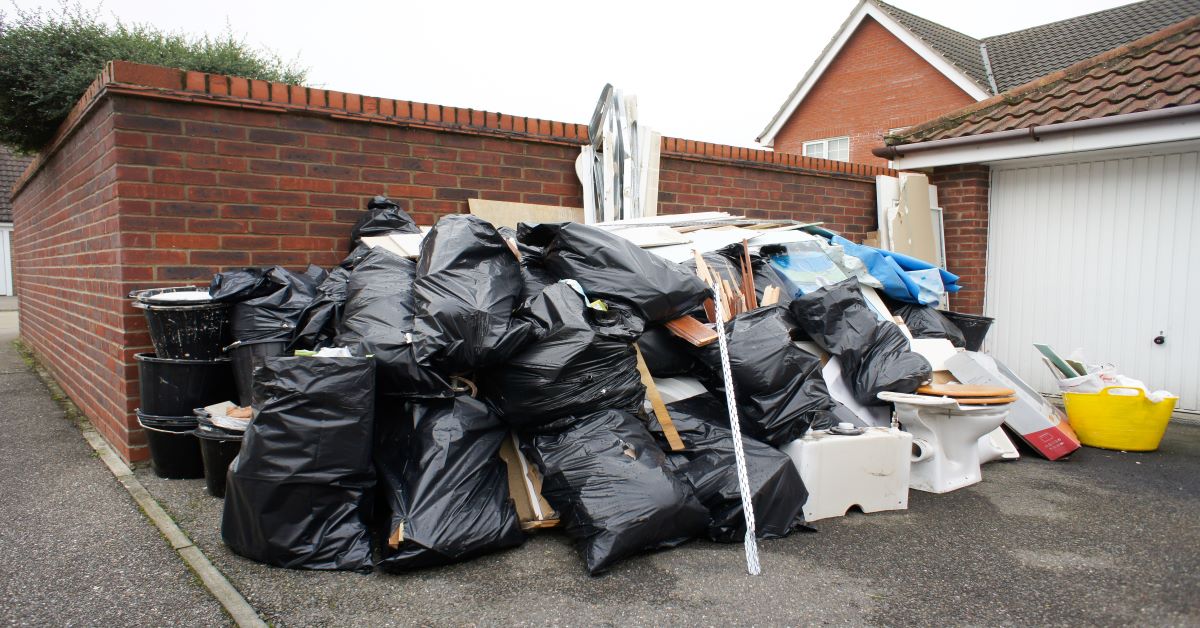Appliance Removal Atlanta: Quick and Safe Disposal Services
Wiki Article
Professional Waste Management Techniques Tailored for Industrial Settings
Tailoring waste management methods to suit the unique demands of commercial setups is not simply helpful but vital for preserving functional efficiency and ecological sustainability. The quest for improved waste management in commercial settings includes a precise technique that stabilizes governing conformity, cost-effectiveness, and environmental obligation.Value of Tailored Waste Management
Tailored waste administration practices are crucial in commercial setups to optimize resource usage and lessen environmental effect. Industrial operations generate a substantial amount of waste, varying from strong byproducts to chemical toxins, posturing a threat to the atmosphere otherwise managed successfully (Trash removal Atlanta). By customizing waste management methods to suit the particular demands and difficulties of each industrial facility, business can not just abide by regulations but likewise boost operational efficiency and sustainabilityOne trick element of customized waste administration is conducting a comprehensive waste assessment to identify the types and volumes of waste produced. This evaluation enables firms to apply targeted services such as recycling programs, waste segregation procedures, and waste-to-energy initiatives. By understanding the structure of their waste streams, commercial facilities can establish cost-efficient methods to decrease waste generation at the resource, bring about lasting ecological advantages.

Kinds of Hazardous Waste
What are the numerous groups of hazardous waste frequently generated in producing procedures? Hazardous waste can be classified into several main classifications based on its make-up and qualities. Harmful waste is just one of the most essential kinds, including chemicals, solvents, hefty steels, and other materials that pose a risk to human wellness or the setting. This group typically calls for special delivery and disposal techniques to avoid contamination and ensure security.One more common kind of hazardous waste is non-hazardous waste, which includes materials like paper, plastics, and packaging waste. While non-hazardous waste may not position instant threats, appropriate management is still vital to minimize land fill use and promote recycling and sustainability techniques.

Hazardous Waste Handling Procedures
Reliable monitoring of contaminated materials in industrial setups requires rigorous adherence to established handling procedures to alleviate dangers and make sure ecological safety. Harmful waste handling treatments include several vital steps to reduce the possible influence on human wellness and the atmosphere. First of all, appropriate identification and classification of contaminated materials are crucial. This consists of determining the qualities of the waste to ascertain the appropriate handling, storage space, and disposal methods.Secondly, as soon as determined, contaminated materials has to be carefully segregated from non-hazardous waste to avoid contamination and make sure appropriate treatment. Storage of contaminated materials ought to comply with click here for more info guidelines regarding containment, labeling, and compatibility to avoid leaks, spills, or other events that can threaten employees or the setting.
In addition, managing treatments must include using individual safety equipment, staff member training, and emergency situation action protocols. Normal inspections, surveillance, and paperwork of contaminated materials handling tasks are essential to keeping conformity and recognizing areas for renovation. By complying with these structured procedures diligently, industrial facilities can successfully take care of hazardous waste and maintain their dedication to ecological stewardship.
Carrying Out Efficient Reusing Practices

To implement reliable recycling practices, industrial centers ought to initially conduct a waste audit to identify the types and quantities of recyclable products created in their procedures. Based on this audit, firms can after that establish assigned recycling terminals, give suitable training to workers on correct sorting methods, and work together with relied on reusing companions for the collection and handling of materials. In addition, setting specific recycling goals, tracking development, and consistently connecting with personnel concerning the value of recycling are necessary actions to guarantee the success and sustainability of recycling efforts in commercial settings.
Monitoring and Continuous Improvement
To make sure the junk removal silverdale performance and sustainability of waste management techniques in industrial setups, the execution of durable tracking and continual improvement procedures is important. Surveillance involves monitoring key performance signs (KPIs) such as waste generation prices, reusing portions, and disposal costs. On a regular basis examining these metrics allows organizations to determine areas for renovation and determine the success of applied waste administration campaigns.Constant improvement is essential for refining procedures gradually. It involves examining keeping an eye on data, identifying ineffectiveness, and implementing changes to enhance waste administration methods better. This repetitive approach fosters a culture of recurring improvement and innovation within the company.
Making use of technology like waste tracking software program and IoT sensing units can enhance monitoring initiatives, providing real-time information for notified decision-making. Employee training and involvement additionally play a crucial duty in guaranteeing the success of monitoring and continual improvement initiatives, as frontline personnel are commonly essential players in waste administration procedures.
Conclusion
In conclusion, customized waste management techniques are critical for commercial setups to efficiently handle various types of waste, including unsafe materials. By carrying out effective recycling techniques and continuously tracking and enhancing waste administration processes, markets can lessen their environmental influence and guarantee compliance with laws. It is crucial for companies to focus on waste monitoring to shield the setting and promote sustainability in their operations.Report this wiki page